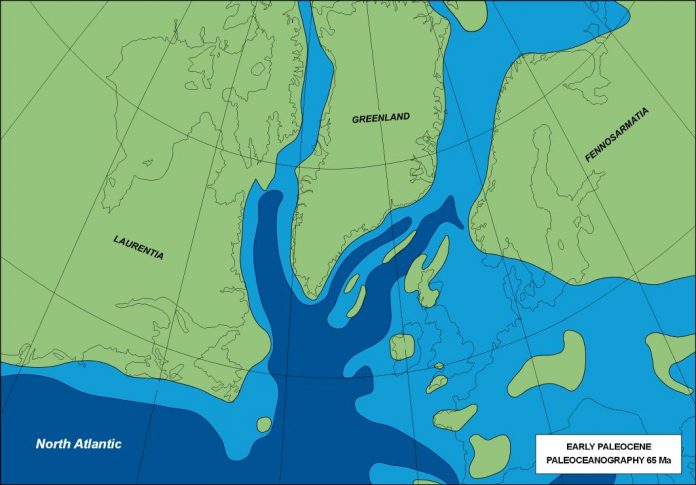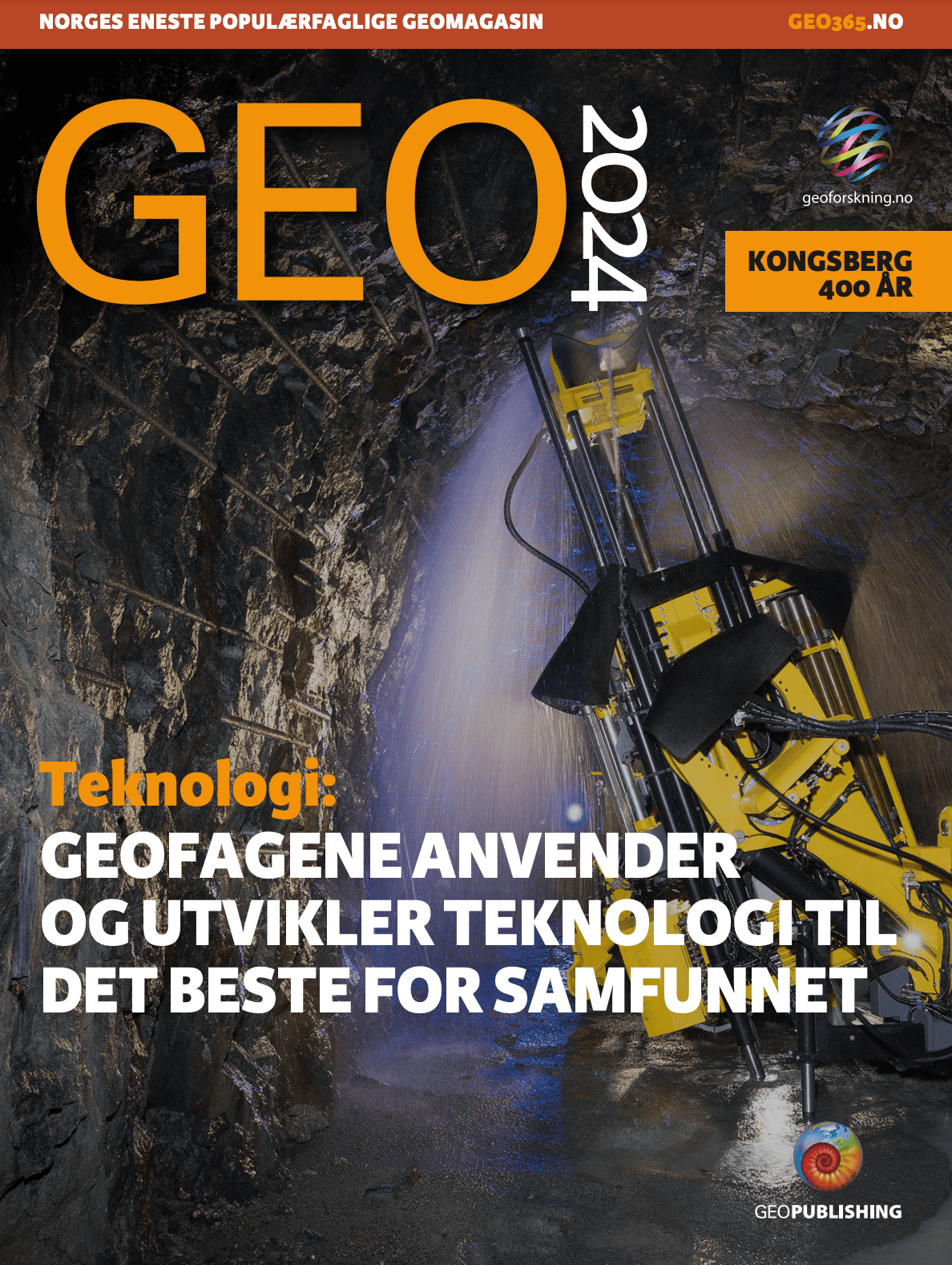Figure 1. Early Paleocene (Danian) oceanography of the North Atlantic region. Most of western Europe is submerged between tropical islands.
This is the first of two articles on the Paleogene of the North Atlantic region. The next will focus on the greenhouse-to-icehouse climatic shift and implications for today’s climate change.
Early Paleocene
The Early Paleocene began with a paratropical ocean in which marine biotas flourished, the calcareous remains of nanoplankton and foraminifera forming extensive Danian chalk deposits of the Ekofisk Sequence similar to those of the latest Cretaceous (Figure 1).
This benign environment changed dramatically during the Middle and Late Paleocene (Selandian-Thanetian) Maureen and Lista Sequences due to uplift of the Greenland mantle plume.
Basalts extruded by the plume form hexagonal columns resembling stepping stones on Northern Ireland’s Giants Causeway and Fingal’s Cave on Staffa Island in western Scotland’s Inner Hebrides where, according to legend, they were built by the giant Fionn mac Cumhaill who was challenged to a fight by the Scottish giant Benandonner.
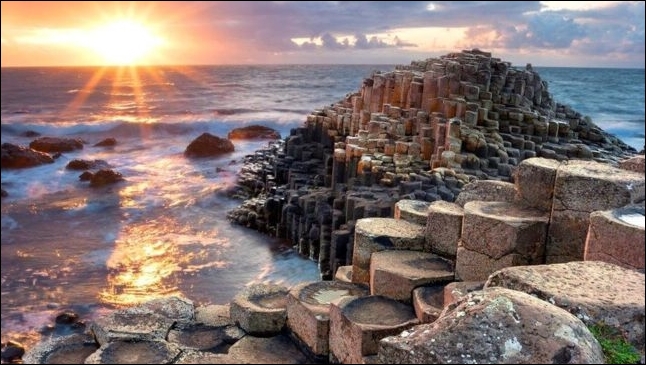
It’s a colourful legend, but the geological story is much more frightening because of its implications for today’s climate change.
The intense volcanic activity resulted in fragmentation of the northern North Atlantic Ocean and runaway climate change (described in our next article). Peak uplift and massive extrusion of flood basalts during the Late Thanetian (Forties, Dornoch and Balder Sequences) separated the North Atlantic region into three marine systems (Figure 2).
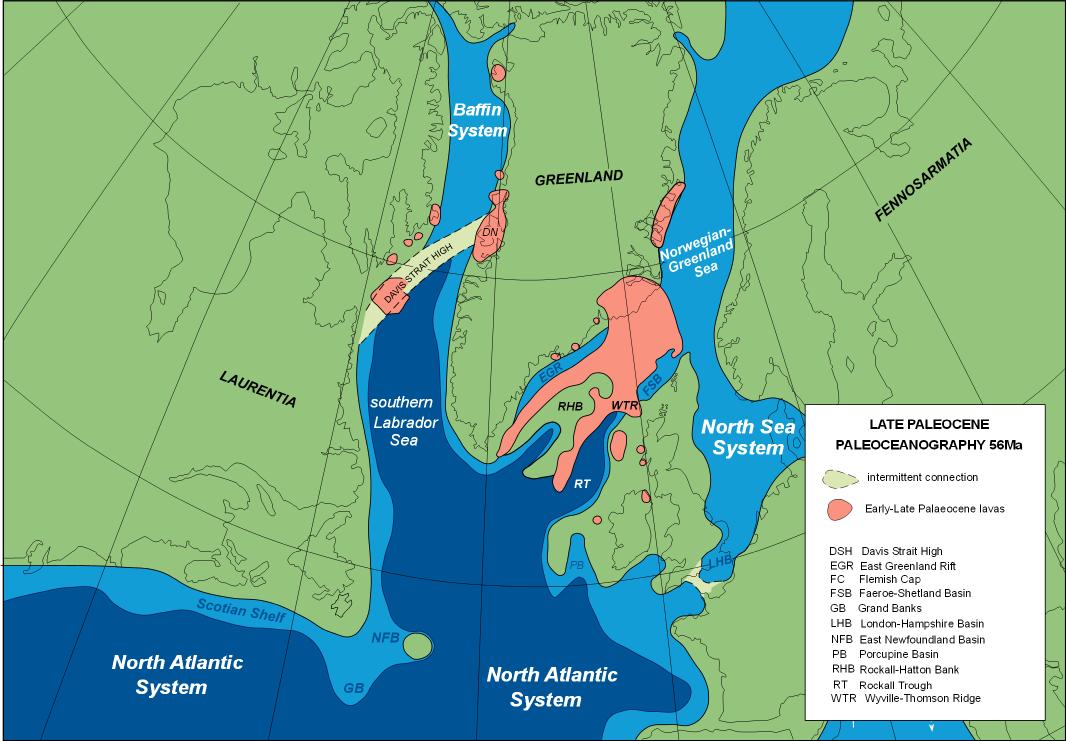
The North Sea System comprised a seaway extending northwards from the London-Hampshire Basin and North Sea to the Norwegian-Greenland Sea. West of Greenland, the Baffin System comprised a smaller seaway bounded to the south by the Davis Strait High.
In contrast, most of the North Atlantic System, including the Scotian Shelf, Grand Banks, northeast Newfoundland Shelf and southern Labrador Sea, had open oceanic conditions with biotas that were more diverse than those of the North Sea and Baffin Systems. The Faroe-Shetland Basin and Rockall Trough formed narrow northeast-southwest seaways of the North Sea and North Atlantic Systems separated by the Wyville-Thomson Ridge, with the Rockall Trough having more diverse assemblages that were similar to those of offshore eastern Canada.
These oceanographic and tectonic changes altered the sedimentation and biotas of the North Sea and Faroe-Shetland Basin. Calcareous nanoplankton and foraminifera that flourished during the Danian were progressively eliminated as clastic sedimentation increased during the Selandian Maureen Sequence.
This altered the water chemistry and microfauna from calcareous-rich assemblages to ones dominated by arenaceous benthic foraminifera and siliceous planktonic radiolaria in the Lista Sequence. Carnivorous dinoflagellates, including Palaeoperidinium, also became more common, supplementing populations that had been dominated by photosynthetic dinoflagellates in the Danian (Figure 3), with the ability of dinoflagellates be photosynthetic, carnivorous or both reflecting their ancient origin and evolution (Bujak & Williams 1981).
The North Sea biotic crisis
As mantle plume uplift reached its peak during deposition of the late Thanetian and early Ypresian Forties, Dornoch and Balder Sequences, the few remaining benthic foraminiferal species were eliminated from most of the North Sea and Faroe-Shetland Basin due to water stratification and bottom-water anoxia during the North Sea biotic crisis (Figure 3).
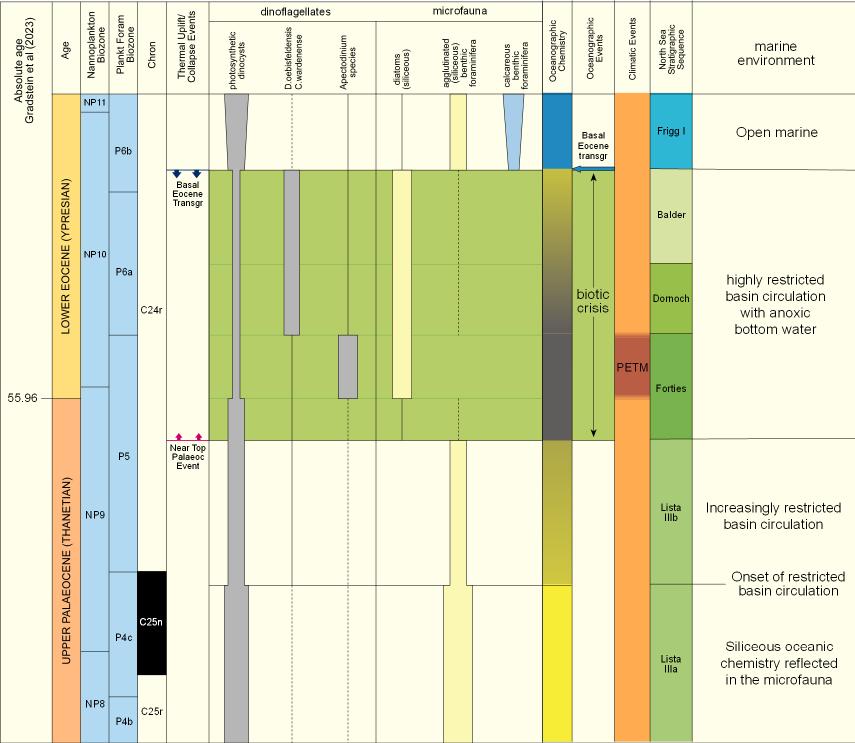
Marine plankton became increasingly restricted by the end of the Thanetian when they were dominated by coscinodiscid diatoms and low-diversity dinoflagellates including carnivorous species of Apectodinium, Cerodinium and Deflandrea that fed on the photosynthetic diatoms.
This resulted in plankton blooms that caused local oxygen depletion and dead zones, with the plankton remains being deposited as carbon-rich sapropels that have potential as hydrocarbon sources depending on bottom-water anoxia, depth of burial and the local geothermal gradient.
Relatively high temperatures also reduced levels of oxygen in the water during the Paleocene-Eocene Thermal Maximum (PETM) – the largest of several hyperthermal (HT) events, described in the next article, that occurred in the Paleocene and Early Eocene.
The Eocene: mantle plume collapse
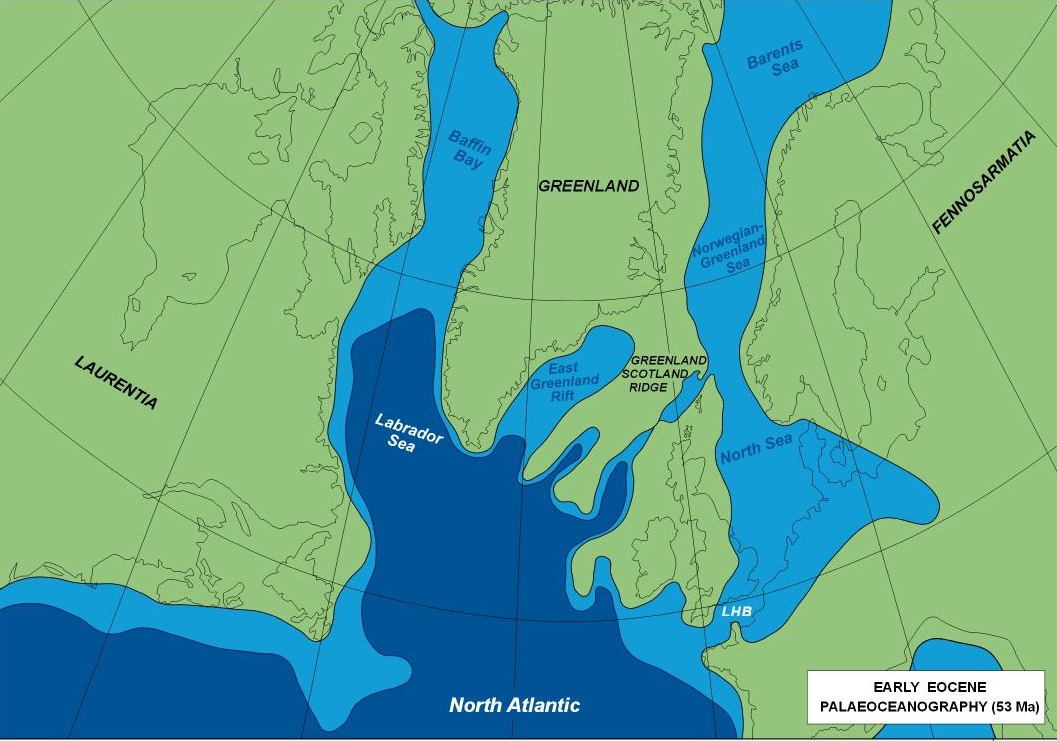
The mantle plume collapsed in the earliest Early Eocene (Ypresian), with breaching of the Davis Strait High resulting in marine connection with the northern Labrador Sea and Baffin Bay seaway (Figure 4).
To the east, widespread (London Clay) transgression opened a restricted Atlantic–North Sea connection initially via the London-Hampshire Basin (LHB), followed by marine connection via the East Greenland Sea in the late Bartonian – Priabonian as the Greenland-Scotland Ridge subsided (Figure 5).
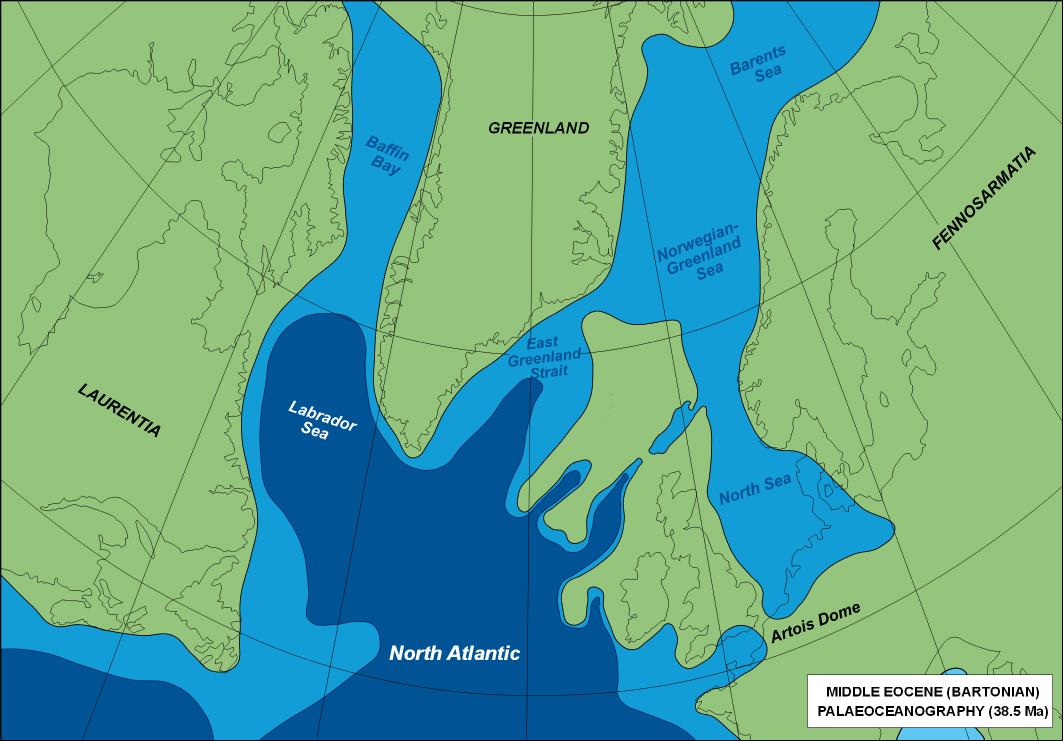
Deep-water connection of the Norwegian-Greenland Sea and North Atlantic had a profound effect on oceanic circulation, including North Atlantic Deep Water (NADW), as it moved towards today’s thermohaline circulation in the Early Oligocene.
Multiple lines of evidence indicate the age of these events as 39-40 Ma with a cluster around 38.5 Ma (Bartonian) for the development of North Component Water (NCW), an early version of NADW (Pillot et al. 2022), as we moved into a very different world from that of the Cretaceous and Early Paleocene.
But this is only half the story. These events also affected the global climate as it shifted from greenhouse to icehouse in the Paleogene, eventually culminating in today’s bipolar glaciation that is now in danger of moving back to greenhouse in just a few decades – reversing processes that took millions of years.
DR JONATHAN BUJAK
Dr Jonathan Bujak was a research scientist with the Geological Survey of Canada in the 1970s and early 1980s, publishing the definitive biostratigraphic zonal schemes and stratigraphy of more than 100 key wells in offshore eastern Canada with Graham Williams.
He then worked with Petro-Canada International Aid Corporation (PCIAC), training geologists in Colombia, Jamaica and Venezuela, and leading paleontological expeditions into the interior of South America, before founding Bujak Research International in 1985.
Jonathan returned to the UK in 1990 and published the bio- litho- and sequence stratigraphy of the North Sea and Faroe-Shetland Basin with David Mudge who sadly passed away in 2020.
Jonathan was involved with the only two geological expeditions to the North Pole: the Lomonosov Ridge Experiment (LOREX) in 1979 and the Arctic Coring Expedition (ACEX) that discovered the Arctic Azolla Event in 2004, through his collaboration with Henk Brinkhuis and colleagues at Utrecht University’s Department of Marine Palynology and Paleoecology.
Jonathan set up the non-profit Azolla Foundation in 2012 with his environmental scientist daughter, Alexandra, with whom he published ‘The Azolla Story’ as an e-book and paperback in 2020, available from Amazon. The book has been translated into French, Spanish and Vietnamese where the Azolla Foundation and Minh Pham Gia promote the use of azolla biofertiliser to double the yield of paddy rice.
Jonathan’s non-exclusive well database documents the Paleogene stratigraphy and absolute ages in 1155 offshore UK and Norwegian wells, including the oceanographic and climatic changes described in these articles. Contact Jonathan Bujak or Helen Bone for details: jonathanbujak@outlook.com / helen_bone@merlinenergy.co.uk
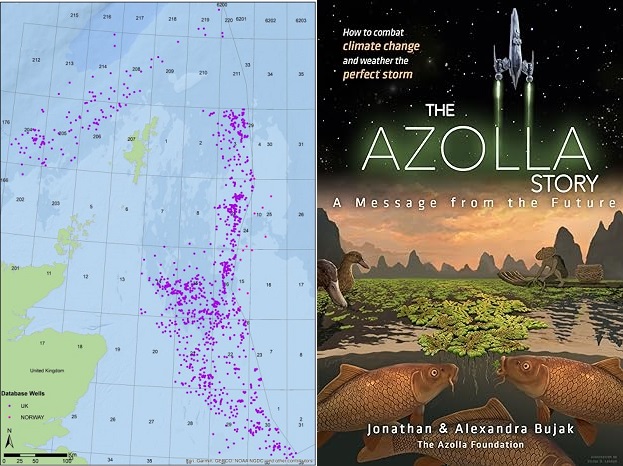
References
Bujak JP. 2023. Paleocene-Eocene high-resolution stratigraphy, paleoceanography and paleoclimate of the North Sea and Faroe-Shetland Basin. Non-exclusive report available from Dr Jonathan Bujak (jonathanbujak@outlook.com)
Bujak JP & Mudge DC. 1994. A high-resolution North Sea Eocene dinocyst zonation. Journal of the Geological Society of London, vol. 151, pp. 449-462.
Bujak JP & Williams GL. 1981. The evolution of dinoflagellates. Canadian Journal of Botany, vol. 59, pp. 2077-2087.
Gradstein FM, et al. 2020. Geologic time scale 2020, 2nd Edition, 1 March 2021. Amsterdam: Elsevier.
Mudge DC & Bujak JP. 1996. An integrated stratigraphy for the Paleocene and Eocene of the North Sea. In: Correlation of the Early Paleogene in Northwest Europe (Eds Knox, R.W.O’B. et al.), Geological Society Special Publication No. 101.
Mudge DC & Copestake P. 1991. Lower Palaeogene stratigraphy of the northern North Sea. Marine and Petroleum Geology, 1992, vol 9, pp. 287-301.
Pillot G et al. 2022. Evolution of Ocean Circulation in the North Atlantic Ocean During the Miocene: Impact of the Greenland Ice Sheet and the Eastern Tethys Seaway. Paleoceanography and Paleoclimatology, vol. 37(8). https://doi.org/10.1029/2022PA004415

